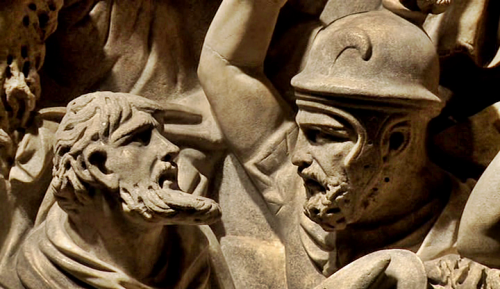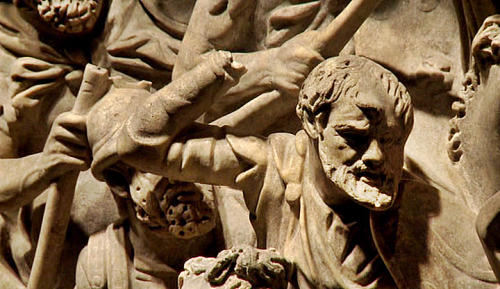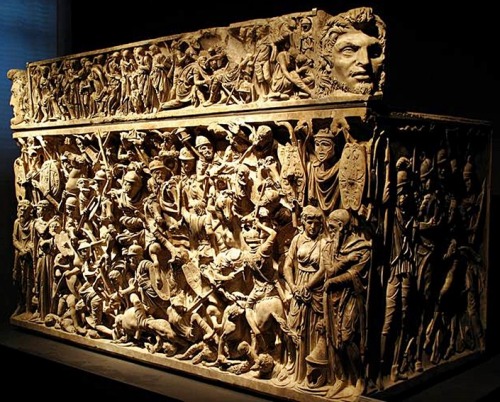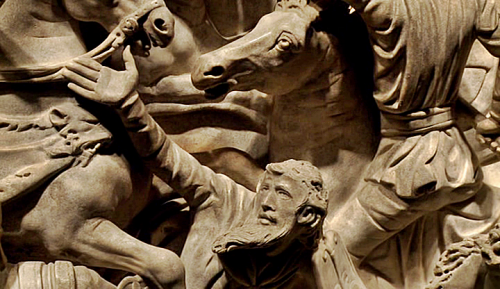#portonaccio sarcophagus
Ancient Worlds - BBC Two
Episode 5 “The Republic of Virtue”
ThePortonaccio sarcophagus (c. 180-200 AD) was found in the archaeological site of Portonaccio, north of Rome. It was used for the burial of a Roman general involved in the campaigns of Marcus Aurelius (a military insignia which can be seen on the upper edge of the casket identifies the deceased as the official Aulus Iulius Pompilius).
The marble sarcophagus shows on its front a symbolic and very dramatic battle between Romans and Germanic tribesmen staged on two levels. The composition focuses on the progress of a Roman horseman (the deceased, his face unfinished) in a melee of soldiers, spears and horses. The bas-reliefs on the sides of the sarcophagus show events subsequent to the clash: on one side, barbarian prisoners crossing a river led by Roman soldiers along a boat bridge, on the other side the chieftains submitting to the Roman officials. The frieze on the lid, between two corner mascarons, celebrates the deceased and his spouse, portrayed in the centre.
The harsh lines and drilling result in great contrasts between the light and dark. The extreme contrast of shadow and deeper lines makes the expressions of pain and suffering more painful, showing the torment incumbent on those who rebel against the rule of Rome. The decoration od the sarcophagus was inspired by many scenes of the Column of Marcus Aurelius.
The sarcophagus would serve as a reminder to visitors to the necropolis of the strength, valor and achievements of this high ranking officer and the Roman army.
Palazzo Massimo, Museo Nazionale Romano, Rome, Italy
Post link





